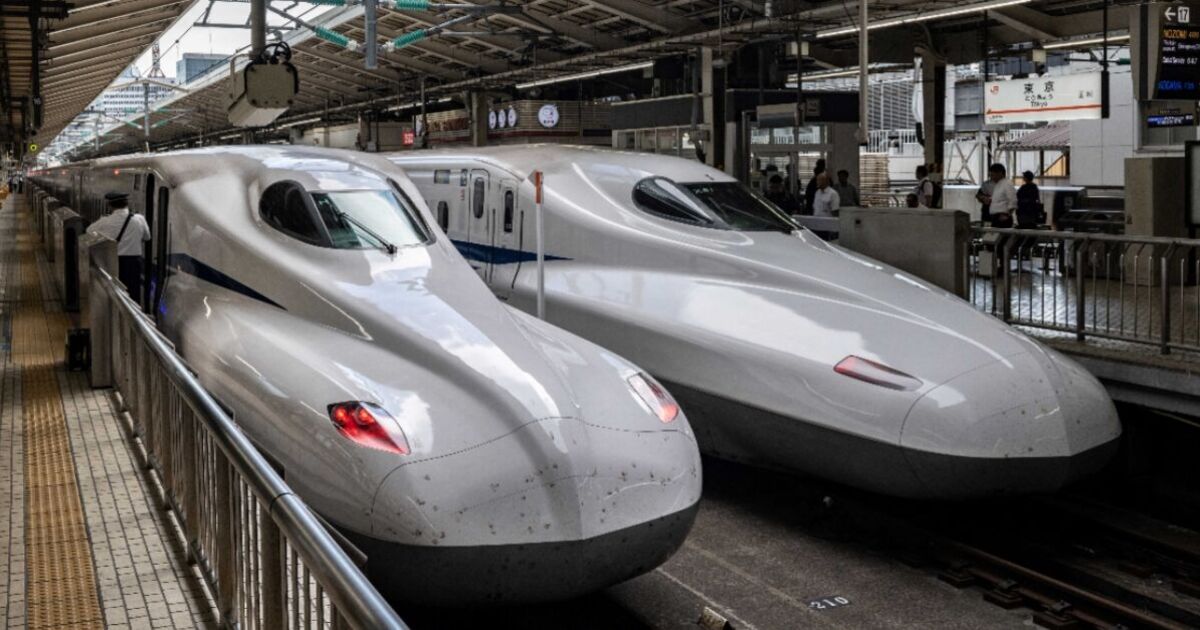Brits waiting on chilly, wet railway platforms in the middle of winter for another late arrival may wish the UK could be more like Japan.
With its amazing Shinkansen line seeing trains hurtling along at speeds up to 177mph, the Asian country’s high-tech railway is said to be the world’s most punctual.
Japanese National Railways, now Japan Rail, managed to almost double the speed of its fastest trains when it created the first Shinkansen, known in English as the bullet train.
The first Shinkansen line opened on October 1, 1960, with new rails built to accommodate the futuristic-looking trains at a combined cost of about £9.3billion (¥1.8trillion).
Since then, Japan’s bullet trains have reached 177mph (285kmh) and inspired high-speed lines in other countries, including France, which opened the world’s second dedicated high-speed line, the TGV, in 1981.
Nowadays, it takes about two hours to travel from Tokyo to Kyoto – a distance of 279 miles.
According to Nippon.com, strict rules around noise levels in residential neighbourhoods mean noises can’t go above 70 decibels, which the publication says is the same as a vacuum cleaner.
To meet the requirements, Japan’s Shinkansen features measures built into the tracks to reduce noise and vibrations.
The shape of the train’s “nose” is also streamlined to reduce “tunnel boom”, an explosive sound of air caused when Shinkansen trains push air out of tunnels at break-neck speeds.
China, Spain and South Korea have also gone on to develop their own high speed lines since Japan pioneered the technology.
However, according to Autentic.com, Japan’s Shinkansen is the world’s most punctual long-distance express train.
The Shinkansen also appears to be one of the safest, with zero accidents leading to injuries or fatalities since services began, the line’s official website reports.
It says the Shinkansen follows a strict schedule, with 130,000 services per year and an average delay as of 2019 of just 12 seconds.

